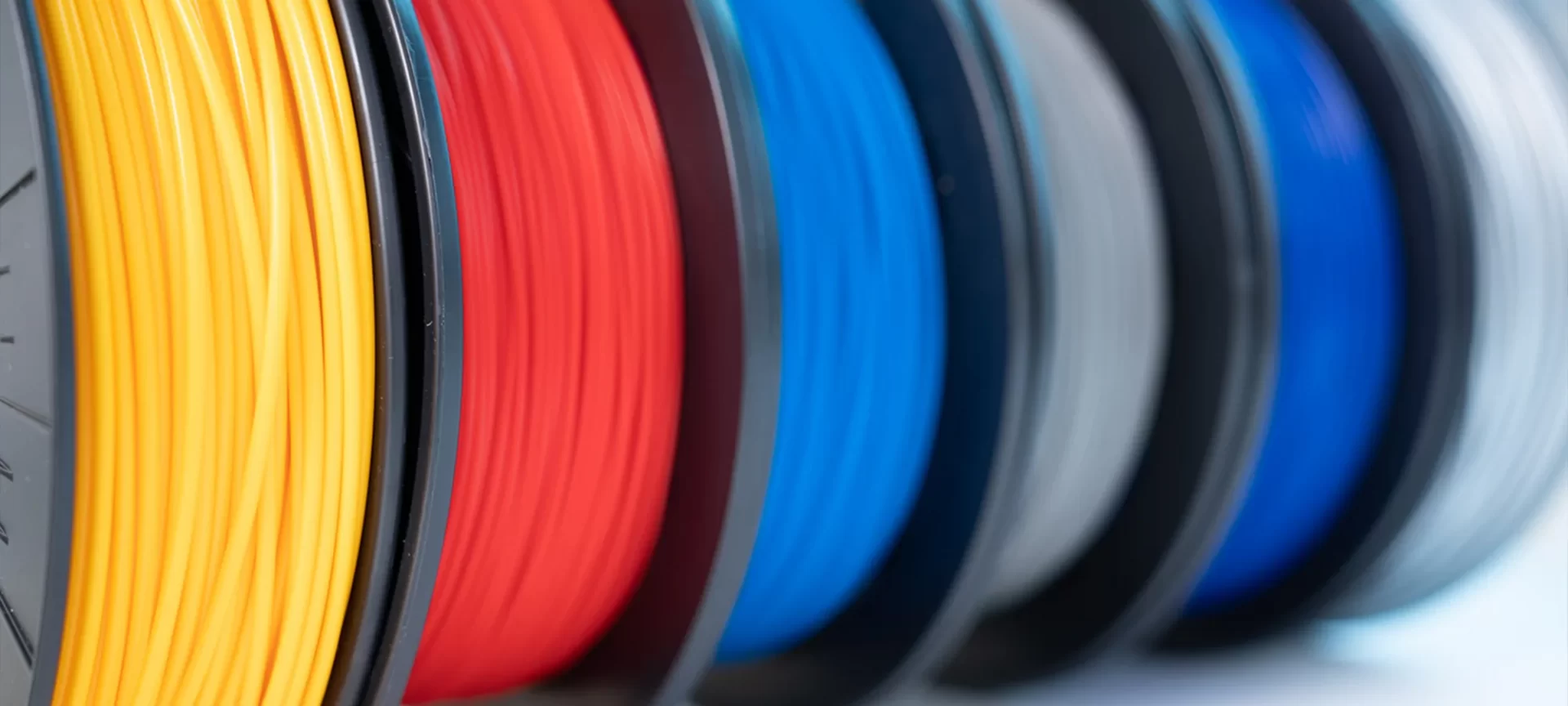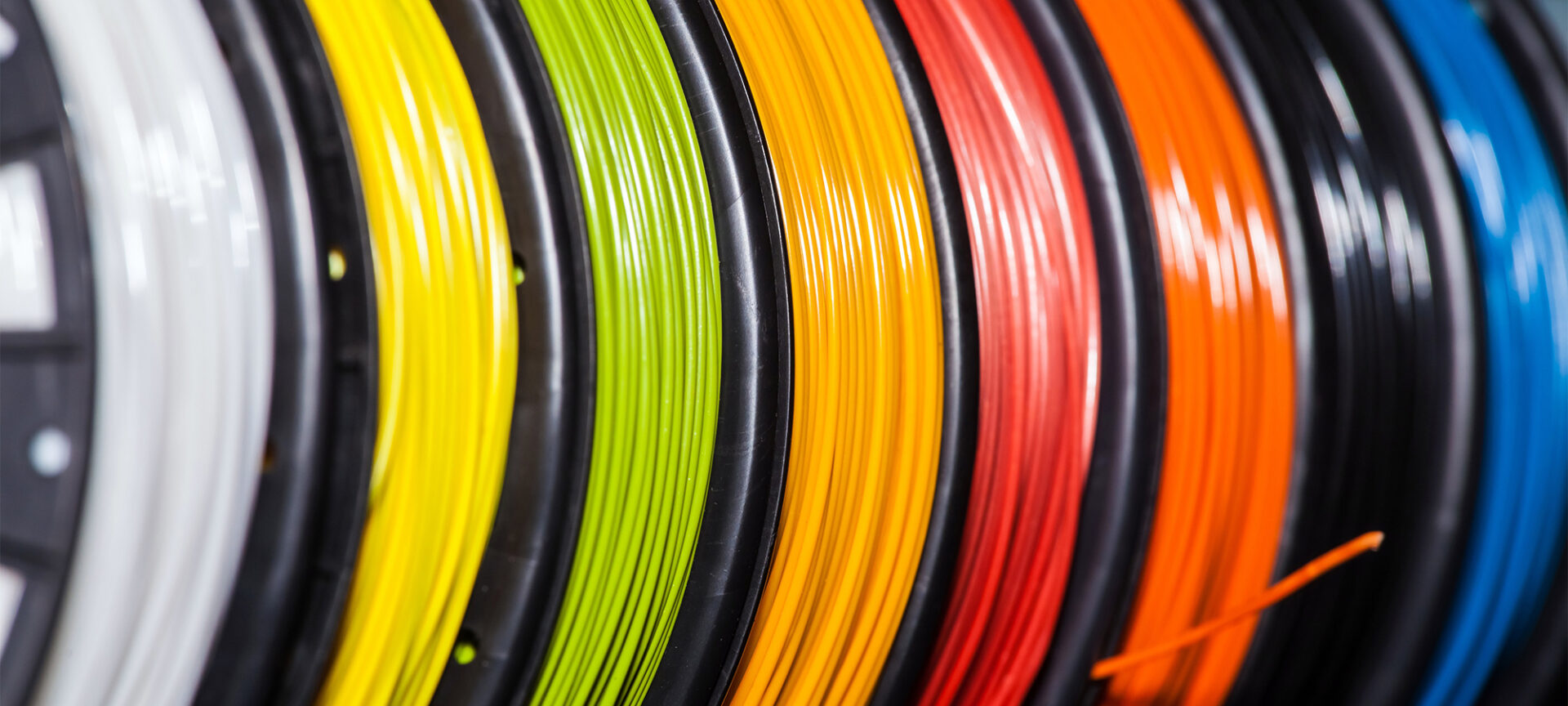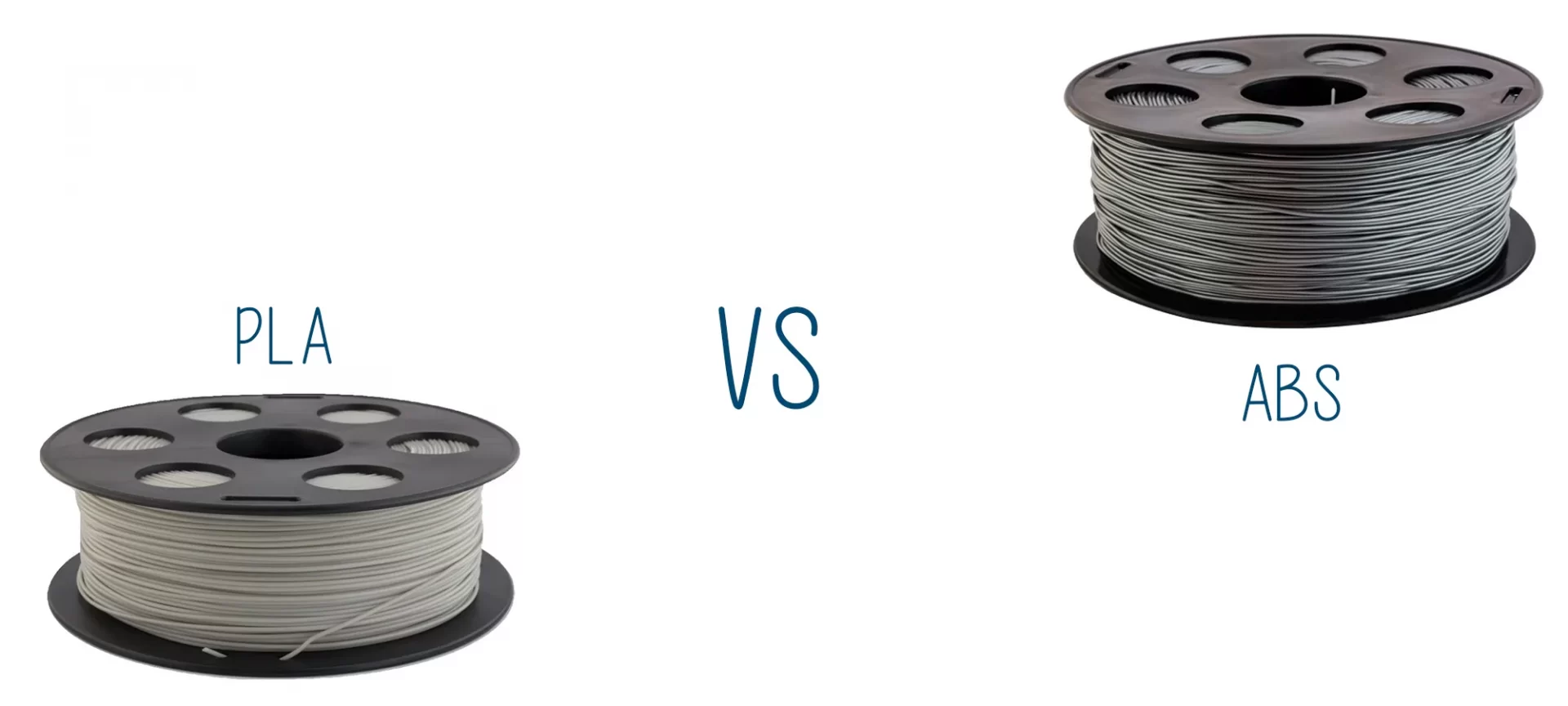Do you know that choosing the right material for your 3D Printing project is very crucial? A lot of things depend on the choice of filament you make when working for your specific needs.
Hence, it’s important to know the difference between these filaments. Comparing the different choices would help you find out which one suits best for your 3D printing needs.
So, here are the details of PLA vs ABS, two of the most common filaments for FDM 3D printing.
FDM 3D printing is the most popular technology for home users and hobbyists. With the introduction of desktop 3D printers, FDM has managed to reach a huge mass of audience.
And, the credit goes to its affordability along with the variety of filaments it offers. Among all those materials, PLA and ABS are used widely by the 3D printing community.
And, the reasons are very obvious. However, there are huge differences in the results offered by PLA and ABS. While one is easier to print with, another offers higher strength and flexibility.
It becomes completely indispensable to pick the right material. Or else, you may never be able to achieve the desired outcomes.
For these reasons, you must check out what it entails when printing with each type of material. And, which one to choose: PLA or ABS.
PLA vs ABS – How Are They Different?
From mechanical to thermal properties, one must measure every minute detail of these materials to find out which one to go with, either PLA or ABS. However, before comparing PLA vs ABS, one must not forget to find out detailed information on each of these filaments.
Starting from their melting point from where 3D printing starts, these materials show a huge difference in terms of their strength and flexibility along with other properties.
But getting a hang of these materials separately would help us understand exactly what they are capable of.
So, let’s start with the definition of PLA and ABS, and then we will go straight to the differences: PLA vs ABS.
PLA – The Easy to Print Filament

PLA which is an abbreviation for Polylactic acid or polylactide is made of biodegradable resources. It often is created using corn starch and sugarcanes.
Printing with PLA is believed to be the easiest experience for beginners. And, almost every 3D printing expert did start the journey with PLA 3D printing.
The filament is safe for printing and easy to tame. When printing with PLA, the sweet smell does not make you all haywire as it is with a few of the other materials.
The resultant parts have a smoother finish and they do have shinier looks. The material does count for some great aesthetic results of the parts.
When it comes to the cost of the material, you would really be amazed to see how cheap it is. You can find a kilogram of PLA Filaments for just $19.
Also, PLA comes in different colors and variations. These do differ in cost, however, they still stay cheap when compared to other materials.
With many manufacturers of PLA, you can get a huge number of brands offering different quality PLA.
Getting a better-quality PLA would help in achieving the best results for your printed parts. To know which brand is best, you can look for customer reviews and connect with 3D makers on forums and online communities.
What is the Melting Point of PLA?
To work with PLA, one must heat the extruder between 180 degrees Celsius to 220 degrees Celsius. Because of the low melting point, the filament does not require a heated bed for printing.
But if you have one, it’s a plus for sure. You can keep the print bed at 60 degrees Celsius to complete the parts and enhance the first layer adhesion.
User Experience When 3D Printing with PLA
When considering every aspect of these materials, it is important to find out how it feels to print with these filaments. For instance, are these difficult to handle or what challenges these bring with themselves.
In the case of PLA, 3D printing seems easiest and like a breeze. If you have heard of challenges such as cracking or warping, you must not worry much about those when printing with PLA.
It is not susceptible to shrinkage as most of the filaments are. Plus, the smell when extruded out of the nozzle is rather sweet instead of being foul.
All these add to the filament’s advantage. Making this material a great aid for various applications.
However, because of its lower temperature for glass transition which ranges somewhere between 60 to 60 degrees Celsius, the material does restrict its usage for certain niches.
ABS – Strong and Flexible

After learning about PLA, it’s time to understand ABS a bit more closely. ABS is the abbreviation for acrylonitrile butadiene styrene. It’s not biodegradable as PLA, however, has enough competitive properties to leave PLA behind for many applications.
This oil-based plastic is highly sturdy owning high strength. Do you also love playing with Lego blocks? If yes, you would like to hear that these bricks are made of ABS.
Apart from toys, ABS is used for a variety of applications. From automotive to protective headgears and many other products.
But what’s disappointing is that the material is difficult to 3D print. If you are a beginner, you may have to struggle a bit to find the sweet spot.
Once you have the perfect settings for the material, printing parts would be a lot easier. However, you can always expect the material to surprise you every now and then. And, it does require a heated bed for printing. An enclosed frame is even more helpful.
Finding such a combination of features in a 3D printer manufactured for home users is a little bit tedious. However, with the decreasing price of these machines and enhanced features rolling in, there are certain 3D printers that are affordable yet offer these add-ons.
The glass transition temperature of ABS is 105 degrees Celsius. Hence, a lot better than PLA. For this reason, the material has more specialized applications as compared to PLA.
If you wish to buy ABS, there are plenty of manufacturers out there. You can order the filament online. You can get ABS for above $20 when buying 1 Kg spool.
What is the Melting Point of ABS?
ABS does not have a fixed melting point being amorphous in nature. However, users recommend to 3D print with ABS between 210 to 240 degrees Celsius. For different 3D printers, the setting may differ. So, one must keep trying to find what best works for them.
Moreover, you must maintain a heated bed with a standard temperature setting of 80 degrees Celsius. Do not shy away from experimenting with these numbers a bit here and there. But do not change these figures with huge differences at once.
User Experience When 3D Printing with ABS
The first and foremost requirement to print with ABS is a ventilated room. This is because the material produces fumes that have a bad smell.
Also, these are toxic and if exposed for a long time, could cause serious problems for users. So, you must plan accordingly.
Choose a room that has windows and doors. Otherwise, if your study room isn’t that airy, you can opt for a 3D printer that comes with a HEPA filter. This enables the filtration of 99 percent of the fumes without needing ventilation.
When comparing PLA vs ABS, one factor that highly affects the change in setting is the high melting point of ABS. Because it has a higher melting point, it is more susceptible to warping and shrinkage on cooling.
It can deform and ruin the entire part design. For this reason, one must use a heated bed. And, maintain a temperature of 80 degrees to print with ABS.
Because of so much of hassle, and pre-requisites, the 3D printers that can justify ABS are expensive when compared to those only supporting PLA. Hence, the ABS is not considered material for home users. Rather, it is more for professional applications.
Difference Between PLA and ABS: PLA vs ABS
As you must have understood by now that there are many differences between these two filaments, let’s dive deeper into the comparison.
Parts Strength
When talking about the tensile strength, PLA is better than ABS. The PLA materials have higher tensile strength. But what makes it unsuitable for printing parts that go through high wear and tear is its lack of flexibility.
In other words, you must also measure elongation at break to find out which material would last longer. Elongation at break measures the parts by stretching it and notes down the length just before it breaks. And, ABS is better than PLA when you consider this parameter.
Hence, parts created with PLA will be brittle and would snap if tried to bend. However, this is not the case with ABS.
While PLA elongation is just around 6 percent. The ABS parts can go on from 3.5 percent to 50 percent when elongated. And, the tensile strength of PLA and ABS are 37 MPa and 27 MPa respectively.
Nozzle Clogging
With PLA, the problem of nozzle clogging is more frequent. However, with ABS, this is rarely a case. Mostly, the printers working with ABS do not face the problem of nozzle clogging ever.
Heated Bed
PLA does not require a heated bed, but users prefer to print with 60 degrees Celsius build platform temperature. However, in the case of ABS, you must own a heated build plate for processing the filament, layer by layer. Otherwise, you would get stuck with challenges such as warping and shrinkage.
Printing Temperature
As discussed above, the printing temperature of both these filaments differs hugely. While you can print with PLA between 180 to 230 degrees Celsius, you must reach a temperature of 210 to 250 degrees Celsius when working with ABS.
Safety
It is always a priority to maintain safety when working with heated components of 3D printers. However, there is more to the story. It’s not just the temperature, but the dust and fumes generated when the plastic is melted.
In the case of PLA, the problems aren’t very alarming as the material is created with biodegradable resources such as corn starch. However, when it comes to working with ABS, users must take the necessary precautions.
It releases harmful fumes, when inhaled for long could cause nausea and vomiting. It can also lead to headaches. So, you must print inside the ventilated room.
ABS or PLA: Which One to Choose?

Choosing a material depends on the task ahead. Your 3D printing goals would help you decide which material to go with. You may find the similarities between these two filaments after checking the details above.
These must be contained in the dry location as moisture can spoil their results. And, these both are close in terms of pricing.
Moreover, how can we ignore the differences that set these materials apart? Hence, you must consider every factor when choosing between the two.
When needing parts showcasing higher structural integrity, as well as better mechanical strength, you must choose ABS. But do not forget to ensure you have the right environment and 3D printer to print with ABS.
On the contrary, when looking for better precision and surface quality, you must go with PLA. The best part is that the material is easy to print with. Hence, if you are a beginner, this choice would certainly make the next steps easier.
In simpler words, PLA is for enthusiasts and home users. On the other hand, ABS is for more professional applications and for producing parts for commercial grades.
The Conclusion
Every material has its own strength and limitation. When trying to compare PLA vs ABS, you must not forget to check both sides of the coin for both these materials.
Doing so would help you decide which filament to go with. And, your printing goals would also help you find out what stays best for your projects.







